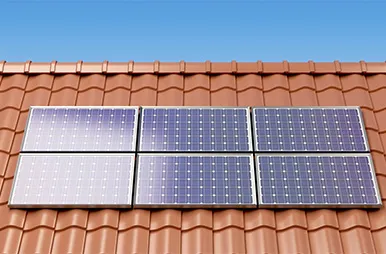solar setup
The Solar Setup Harnessing the Power of the Sun
In recent years, the escalating environmental concerns and the undeniable effects of climate change have propelled solar energy into the spotlight as a viable alternative to fossil fuels. A solar setup, often referred to as a solar power system, consists of various components that work in concert to harness sunlight and convert it into usable energy. This article will explore the components, benefits, and considerations of setting up a solar power system, shedding light on the transformative potential of solar energy.
At the core of any solar setup are solar panels, which are typically composed of photovoltaic (PV) cells. These cells absorb sunlight and convert it into direct current (DC) electricity. When sizing a solar system, it is crucial to assess your energy needs, which can be determined by reviewing past utility bills. This evaluation helps in determining how many solar panels are required to meet your energy demands. Most residential solar panels produce between 250 to 400 watts each, and the number of panels needed can vary greatly depending on individual energy consumption and the amount of sunlight received in your area.
Another essential component of a solar setup is the inverter, which converts the DC electricity generated by the solar panels into alternating current (AC) electricity that can be used by household appliances
. There are different types of inverters available, including string inverters, microinverters, and power optimizers, each with its own advantages. For instance, microinverters operate at the individual panel level, optimizing performance even when some panels may be shaded.In conjunction with the solar panels and inverter, batteries are becoming an increasingly popular addition to solar setups. Battery storage systems allow homeowners to store excess energy generated during sunny days for use during nighttime or cloudy conditions. This capability not only enhances energy independence but also provides a backup source of power during outages. However, the upfront costs of battery systems can be high, and potential buyers should weigh the benefits against their specific energy needs.
solar setup

The benefits of installing a solar setup extend beyond simple energy production. First and foremost, harnessing solar energy can significantly reduce electricity bills. Many homeowners find that they are able to offset a substantial portion, if not all, of their utility costs. Additionally, solar energy is environmentally friendly, reducing greenhouse gas emissions and reliance on non-renewable energy sources. By adopting solar power, individuals contribute to a cleaner environment and help mitigate the effects of climate change.
Financial incentives also play a pivotal role in the growing popularity of solar energy. Many governments offer tax credits, rebates, or grants to encourage the adoption of solar technology. In the United States, for example, the federal solar tax credit allows homeowners to deduct a significant percentage of the installation costs from their federal tax returns. Many states and localities also offer additional incentives, making solar energy more financially accessible.
However, potential solar customers must also consider the challenges involved in adopting solar energy. Initial installation costs can be high, even with incentives, and the technology requires ongoing maintenance. Homeowners in areas with limited sunlight or those residing in less conducive locations may find that solar is not the most efficient solution for their energy needs. It is essential to conduct thorough research and, if possible, consult with professionals to ensure that solar energy is the right fit for your situation.
In conclusion, a solar setup holds the key to unlocking the abundant energy of the sun. By understanding the various components and weighing the benefits against the potential drawbacks, individuals can make informed decisions about adopting solar technology. As advancements continue to be made in solar power systems and technology, the future of solar energy looks promising, paving the way for a cleaner, sustainable energy landscape. Embracing solar energy isn’t just an investment in your future; it’s a step towards a more sustainable planet for generations to come.
-
String Solar Inverter: The High-Efficiency Solution for Smart Solar EnergyNewsJul.14,2025
-
Revolutionizing Rooftop Energy with the Power of the Micro Solar InverterNewsJul.14,2025
-
Power Independence with Smart Off Grid Solar Inverter SolutionsNewsJul.14,2025
-
On Grid Solar Inverter: Powering the Future with Smart Grid IntegrationNewsJul.14,2025
-
Monocrystalline Solar Panels: High-Efficiency Power for the Future of Clean EnergyNewsJul.14,2025
-
Bifacial Solar Panel: A Smarter Investment for Next-Generation Energy SystemsNewsJul.14,2025







